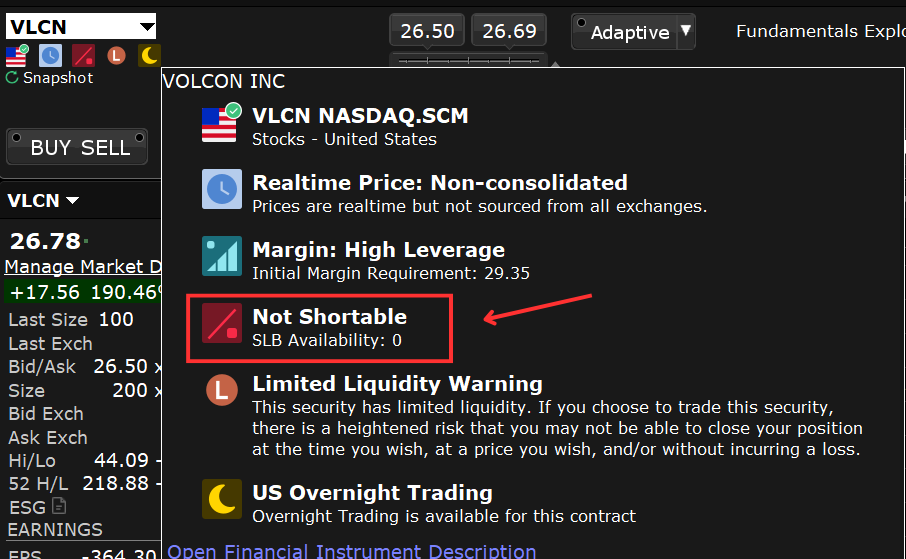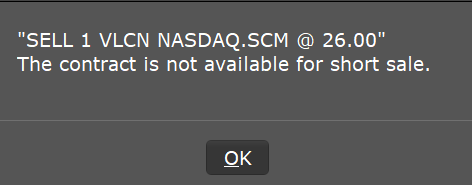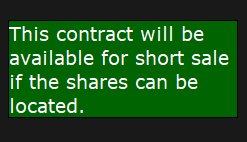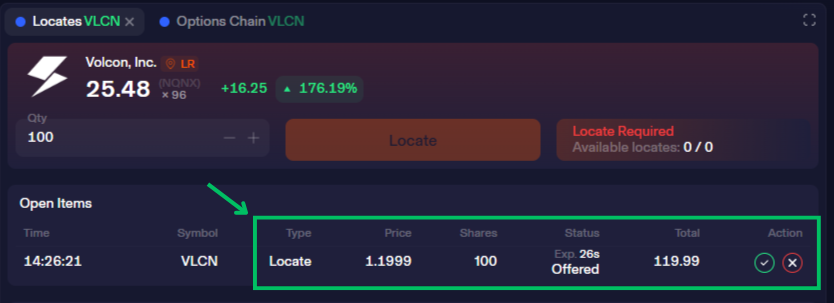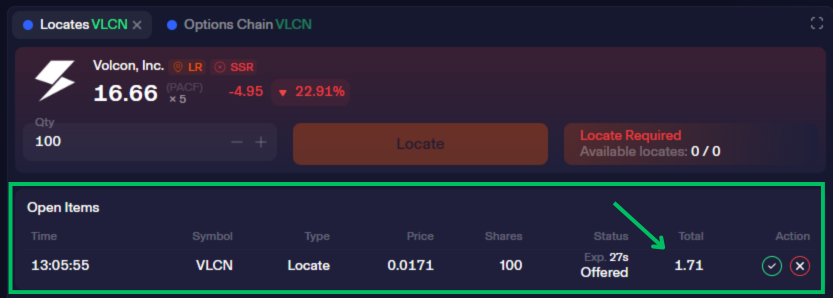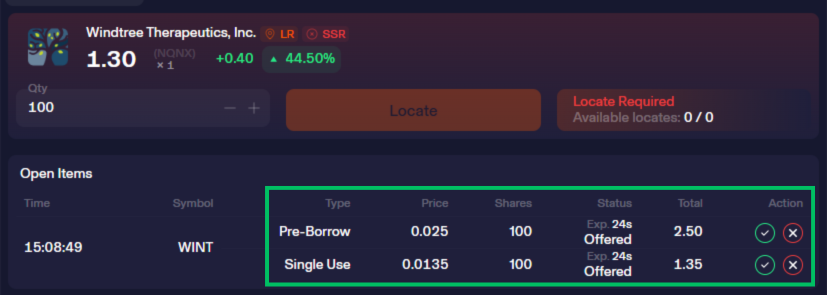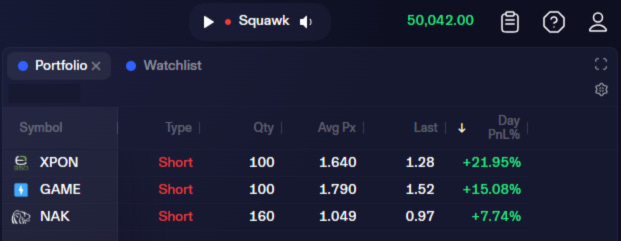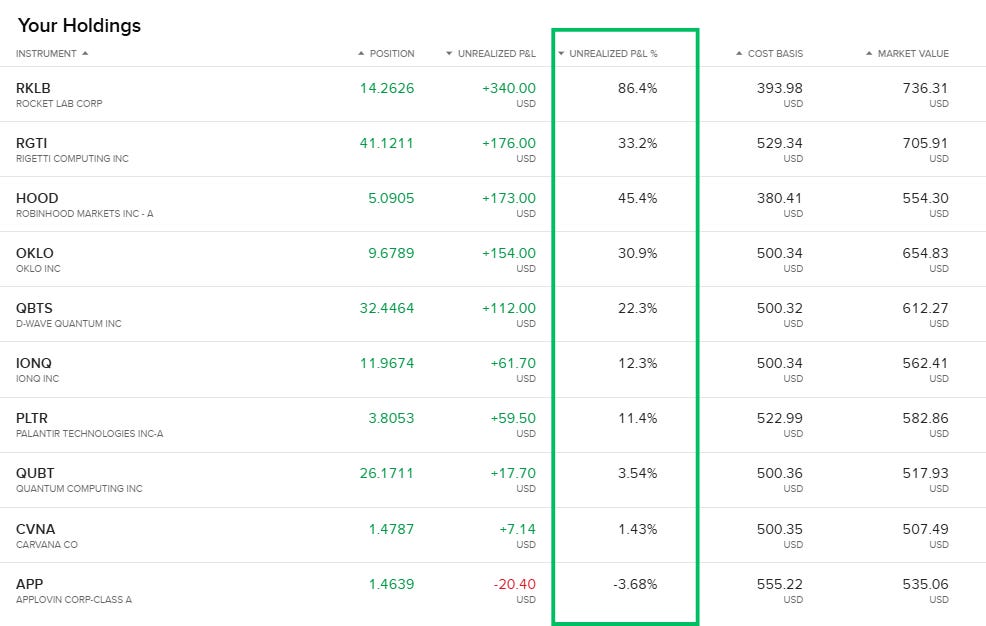Quantitative Short Selling is Still Free Money... Kinda.
This shouldn't work, but it does. Welcome to quant land.
At The Quant’s Playbook, we take market opportunities very seriously. If we even get a whisper that there might be alpha lurking in some overlooked corner of the market, we break our backs to verify it, and if it’s real; we push it to production as fast as possible.
Well, recently, we found something real.
Picking back up from our earlier short-selling experiment, we dove headfirst into the entire short-selling ecosystem and committed ourselves to building and deploying a strategy around it:
We started with a crude test: short the small-cap stocks showing the highest one-day volatility; no overthinking.
After verifying the historical simulation, we went straight into prod, paid some steep borrow costs, and to our surprise, did pretty well.
Eventually though, we hit a wall; one that every serious short seller runs into:
Basic retail brokers aren’t built for this.
Now, if you’re retail and looking to get into “big boy” trading, the industry standard is Interactive Brokers.
IBKR will generally let you short the shares you need, albeit at a steep borrow cost; but once you start venturing into the murky corners where the real edge lives: the $2 garbage fires, the pump and dumps — you’ll often see stuff like this:
You can sit there and watch the price drop 40% over the course of the day, but if they don’t have it, you don’t get it — period.
Naturally, being the plucky quant that you are, you think to yourself that there must be a way to be able to short the shares you need. Actually, screw the shares you need, you should be able to short anything you want.
So, after some digging, you find out that you were still a fresh-faced rookie in the short selling business and that there exists an entire network of specialized brokers that focus exclusively on short selling.
Doesn’t matter if you want to short TSLA or a $0.50 Omaha Refrigerator company — they will get you the shares.
We were already in motion when we hit this bottleneck, so the second we found out about these brokers, we signed up, deposited a sizable amount and kept trying to get our strategy back up.
Of course, as is tradition in this business, that freedom came with a price.
Today, we’re going to give you an in-depth tour of the shadow world of exclusive short-selling brokers, share a pretty interesting strategy we developed (with real trades to prove it), and dive into some damn fun quant stuff along the way.
So, without further ado, let’s get right into it.
The True Cost of Freedom
Alright, you’re a fresh-faced quant looking to dip your toes into short selling. You think to yourself:
“There’s always a handful of stocks that double in pre-market, only to fizzle out by the close. Why don’t I just short those?”
You run a quick, transaction-cost-free backtest and the results look killer. So, naturally, you jump straight in to see what the real-world costs actually are.
You fire up your production script, generate your daily basket, and head over to your broker — ready to pounce.
But before you can even risk a single dime, you’re hit with a message from your broker:
Upon returning to Earth from your rage, you put in a bit of elbow grease in search of a way to short these shares and eventually, you wind up at TradeZero (no affiliation).
You search for the same stock you were blocked from shorting and quickly realize this is a whole different game.
With specialized brokers like these, the model is flipped. You don’t just borrow shares that are available; you pay upfront to locate them:
The cost of a locate is typically charged per share, and most of these brokers require a minimum request — usually 100 shares. Just like traditional borrow fees, the cost changes based on demand and how difficult the shares are to source.
If it’s a low-float name with only 30,000 shares outstanding, expect to pay up.
Think of a locate like an option: you're paying for the right, not the obligation, to short the shares.
Say you’re offered a locate for 100 shares at a cost of $120. At that point, you’ve got three choices:
Use the locate and submit a short sell order for those shares
Credit the locate back to the system (sometimes possible)
Let it expire unused at the end of the day
Now, in the above example, the cost for getting the ability to short 100 shares was $120. We can run a quick test on what that’s costing us right off the bat:
100 shares * $25.48 = $2,548 notional exposure
$120 fee on that → 5% of total size (120 / 2.5k)
Now, as we covered in our first intro to the short selling business, this isn’t really that big of a problem. The expected variance of shorting garbage hovers around 15-20% per day, so that 5% hurdle is easily beatable.
The bigger issue is that this creates a kind of pseudo-barrier. Let’s say you’re starting with the $25,000 minimum needed for intraday trading. If you only want to risk 1% of your account on a single name, that’s $250.
But remember: you already paid $120 for the locate. If you only put $250 into the position, you'd need the stock to drop nearly 50% just to break even. To keep the breakeven around 5%, you’d need to short the full 100 shares, which puts about 10% of your total account on the line.
That kind of sizing might make sense in a high-quality momentum portfolio, but for shorting explosive small caps? That’s just reckless.
That said, the cost of this locate was an edge case and not the norm.
Just one day later, after the stock cooled off, the same locate became dramatically cheaper:
We’ve also encountered cases that add even more friction — like stocks under a short-sale restriction (SSR), which means any short order must be placed at a price above the last traded tick.
In the example below, we had a stock that was both hard-to-borrow and under an active SSR. Nevertheless, the locate was surprisingly cheap: just $1.35 for $130 worth of short exposure — roughly a 1% breakeven:
Single-use locates like this are often cheaper because once you pay, you’re obligated to short the shares; no backing out.
Locate pricing, in general, can swing wildly throughout the day as demand and supply shift, but operationally, it’s fast: it only takes about two seconds to quote and accept a locate.
So, at this point, we had conquered a major constraint: we could short anything we wanted — stocks, warrants, ETFs — whenever we wanted.
With that complete, this brought us back to the real challenge: actually being right.
Thankfully, after a lot of leg work, we were able to put together a pretty robust framework that we’ve already taken live.
Now, we’re usually pretty open about our strategies, often going as far as publicly open sourcing them entirely — but as you’ll see in a moment, there are a few details we have to keep close to the chest.
Stuff We Should Probably Keep to Ourselves
At a high level, we’re just shorting pre-market pump-and-dumps.
Sure, we could dress it up with some rationale like:
“Due to limited liquidity in early pre-market trading, price discovery tends to be inefficient and diverges from fair value — a mean-reverting dynamic we aim to exploit.”
But really, we’re just doing the “obvious” — and it works.
Here’s a quick overview of how the strategy operates:
Each morning, we pull cross-sectional data from early pre-market trading.
For every stock that’s traded up to that point (e.g., 7:00 AM EST), we pull the data, apply a few transformations, and consolidate it into one big dataset.
Next, we apply a heuristic (a basic filter) to narrow down the universe.
Think: traded at least once, market cap below a certain threshold, etc.
From there, we feed that filtered dataset to a pre-trained model* that outputs predictions and probability scores for the day.
Finally, we short the top-n names ranked by our model, equal-weighted across the basket.
There’s still some light discretion involved. We tend to skip obvious gimmicks, like the $0.50 biotech announcing a pivot to Bitcoin or AI. Those often go parabolic for long stretches just on pure momentum, so we skip them.
This is still a relatively new strategy, so although we stumbled a bit in getting it to prod, we were able to get a few trades under our belt.
Here’s a look at how we’ve done so far:
Again, it took lots of behind the scenes work to not only validate our initial backtesting, but to get to prod as soon as possible.
Nevertheless, even in our WIP (work-in-progress) phase, our model has consistently exposed us to names with high realized volatility and a clear directional edge. Finding both in sync is rare.
*Now, this might sound simple on the surface, but the modeling behind the curtain is anything but.
In a previous post, we talked about the growing depth of our quant infrastructure, with a focus on how we manage our datasets to rapidly test and deploy new trading ideas:
That same level of intensity applies to the modeling side.
We’ll break it all down in a future dedicated post, but here’s a quick preview for the curious:
We use an ensemble of two models: a random forest and a basic logistic regression. We take the predicted probabilities from each, blend them into a composite score, and rank our candidates accordingly.
More importantly, we’ve moved beyond the classic rookie mistake of throwing raw data at a model and expecting it to perform miracles. These days, we treat the model like a sniper, not a black box — giving it the assist it needs to lock onto high-conviction targets.
We’ll save the deep dive for later, but if you’re into the backend modeling and feature engineering side of things, stay tuned 😉.
Now, you may have noticed that on one of our historical trade days, we took a pretty sizable loss on a single position.
This isn’t just noise, but rather it highlights one of the core bugs (or “features,” depending on how you look at it) of this approach:
Short selling is inherently negatively skewed.
Your best-case scenario is capped at 100% (the stock goes to zero), but that almost never happens in a single session. Realistically, the upside on a clean short is more like 20–30%.
The downside, though? Technically unlimited. A stock can just keep going up and up and up. It’s rare, but it happens.
In our case, one name ran hard and left us with a brutal -61% hit on that position.
Fortunately, this is exactly why we run an equal-weighted portfolio. It smooths out the tail risk and kept our total PnL in the green even with that wildcard in the mix.
Final Thoughts + Considerations
Although we’re still early in the process, we’ve proven that: for some reason, you can still make money in U.S. equities just by shorting garbage in the pre-market.
That said, there’s a ceiling here.
What we’re working with is what’s known as a capacity-constrained edge.
Most of the names our model surfaces trade for just a few bucks, and pre-market liquidity is thin to begin with, so scaling becomes tricky.
Starting small, we had no problem filling $500 orders, even at weird hours like 6 AM. But what happens when you want to scale to $25,000 per trade? Or $100,000? $1 million?
At some point, your own size starts to move the market; and when you’re the one creating slippage, you’re also eroding your own edge.
It’s a beautiful, textbook example of how markets become efficient: inefficiency spotted → capture it for profit → keep capturing until you fix inefficiency → markets more efficient.
Now, of course, that might not be entirely true.
As we continue scaling this strategy (aiming for $10K+ notional per day), we’ll learn where the stress points really are. It’s entirely possible that with smarter execution, think: dark pools, algorithmic routing, more specialized brokerages — we can sidestep some of these liquidity bottlenecks altogether.
Speaking of scaling up strategies, not to brag 😏 — but we’re still getting great returns from our momentum strategy, with the performance of this month’s basket pictured below:
We haven’t made any major changes, so we’re sticking to our rebalancing schedule, keeping size consistent, and just hoping to lock-in a solid year.
Strategy Primer:
GitHub Repo:
Alongside capacity constraints, there's also the pragmatic side of scaling this up.
A traditional short-focused hedge fund might have a thesis on a name and confidently slap on 5x leverage, but with systematic strategies like this, you can’t bet the farm.
Sure, your model says a stock is overextended and likely to mean revert. The backtest checks out. You’re even making money in prod.
But let’s be honest: you don’t know anything with the kind of certainty that justifies abnormal sizing. You’re well aware that high variance goes both ways. That day’s short portfolio might rip against you just cause.
So, naturally, you adopt a risk budget mindset — say, a 10% allocation across the portfolio, not per position.
This ensures you never blow up (goal #1), but it also means it takes time to stack meaningful dollar returns.
Still, this unlocked a bit of a Pandora’s box for us:
If we can reliably short anything we want… what new strategies become possible?
Short covered call ETFs, long the underlying?
By design, covered call ETFs underperform the underlying asset. Take CONY vs COIN over the last six months: -25% vs +42%. You’d need to sidestep dividend obligations since that’s what creates the pricing gap, but it’s a starting point.
Dividend capture arbitrage?
Everyone knows that prices drop by the dividend amount on the ex-div date, but this is only once the exchange officially opens and re-marks the official opening price at 9:30. What if you’re shorting at 4 AM, before the markdown kicks in?
As we keep building this operation, we’re excited to explore these kinds of edges and see what hidden mechanics we can exploit, especially now that we’re free to short just about anything.
It’ll also be interesting to see what challenges we’ll run into, but nevertheless, this is one heck of a business.
Good luck, and happy trading. 🫡🫡
Still hungry for edge? We respect it. Here’s some more to chew on:
A No-BS Look at Quantitative Trading Infrastructure
The fun (and gritty) behind-the-scenes of how we manage our datasets to rapidly test and deploy new trading ideas.
Ultimate Crypto Arbitrage Guide
An incredibly detailed dive post by our good buddy and fellow arena-er, Quant Arb at The Quant Stack, breaking down where real arbitrage opportunities still exist in crypto and the nuances involved.
A Junior Quant's Guide to Chasing Vol and Shorting Stocks
The origin story of our short-selling journey: an experiment exploring volatility clustering and the mechanics of shorting step by step.




